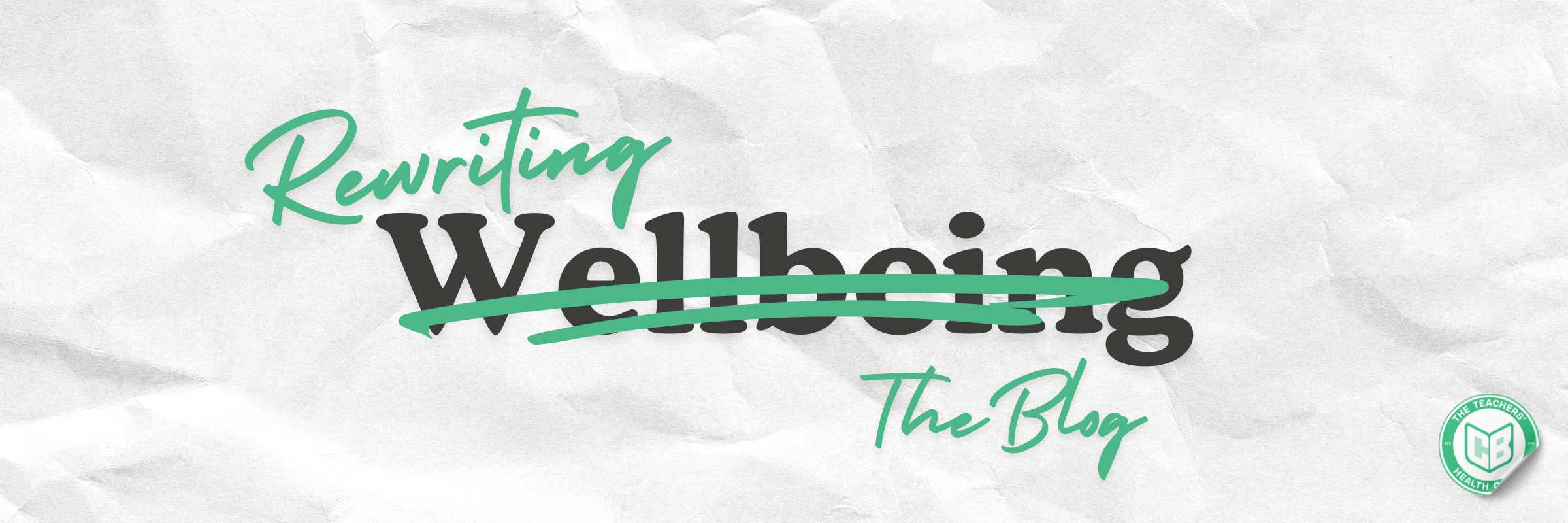


Struggling To Switch Off This Summer?
I'm feeling a bit fuzzy-headed at the moment…
You know that feeling of just having too much on your mind?
That sensation of things just being a bit blurry, almost like your brain's trying to walk through fog every time you try to think of something?
Of course you do, you’re in education!
Yeah, well, that’s where my head’s at right now.
“But Charlie, you’ve just started a week off - you’re on holiday!”
True, but (and you might relate to this) it doesn’t mean my brain has just perfectly powered down for a period of 7 days - that’s not how the brain works.
Clearing your mind is a bit more complicated than just not thinking about things. In fact, research shows that the more we try not to think about something, the more we tend to!
For example, I want you not to think of a polar bear.
No! Don’t think of a polar bear!
What’re you thinking of..?
The second thing that’s important to note about our brains, when we’re talking about struggling to switch off, is that these 3lbs wet, walnut-looking things in our heads aren’t actually built for holding thoughts…
They’re built for having them!
But what about the long-term memory? I hear you ask…
Okay, I’ll give you that. Our brains have a few features that can help hold a limited number of poorly-stored bits of information, that we can sometimes recall incorrectly!
They're also bombarded with 11,000,000 (that’s eleven million!) pieces of information every single second and they filter those down to just 40-50 that they can consciously work with.
On top of this, we also generate around 6 unique thoughts every minute (that’s about 6,000 a day - if you’re awake for 16 hours), 85% of which are estimated to be repetitive thoughts.
Not great if you’ve got some negative self-talk going on!
Anyway, I digress…
When we’re asking our brains to remember to get back to that email, check that CPOMs report, sort the kids’ lunches, make the beds, pay that bill, reply to that colleague, pick up some toilet paper, and, of course, not to forget about that idea for the English medium term plan…
It’s not hard to see why they might be feeling fuzzy!
So, what can we do if we’re struggling to switch off? What’s the “fix” here?
Understand Why You’re Struggling
As a teacher, your brain is often required to be hypervigilant, making thousands of decisions a day and absorbing an awful lot of emotion - it’s running at a million miles an hour every day.
When this is prolonged, it can cause the amygdala (our brain’s alarm) to become hyperactive. It can keep stress chemicals such as adrenaline and cortisol increased, causing you to feel heightened.
As if that wasn’t enough, our Default Mode Network, a network of brain regions we use when we’re not actively focused on the outside world, can become overactive causing us to overthink, ruminate or have intrusive thoughts.
We like the DMN, it helps us be creative and problem-solve, but too much activity can have the opposite effect!
It’s unfair to expect yourself to just suddenly switch off. This might take some time and during that period there might even be feelings of lethargy, sadness or grief as you say goodbye to your regular routine for a few weeks.
This, by the way, is the abridged version!
Calming The DMN & Amygdala
Alongside being involved in your brain’s alarm system, the amygdala is also dubbed the fear centre of the brain. To help reduce the threat response in the brain, which can lead to overthinking, we can look to calm the amygdala and reduce activity in the DMN.
To do this we can focus on breathwork and mindfulness. Before I tackle the myth of mindfulness, let’s quickly touch on a few breathwork strategies that can help:
The Physiological Sigh: take two short inhales through the nose. Hold for a second. Exhale through the mouth, emptying your lungs. Repeat 10 times.
Box Breathing: Breathe in for 4 seconds. Hold for 4 seconds. Breathe out for 4. Hold for 4. Repeat.
Hand Breathing: Tracing your index finger up the side of your palm and little finger of the opposite hand, breathe in. Pause at the tip of your little finger. Exhale on the downward movement. Move across your hand, repeating for all digits as many times as needed.
So, that mindfulness myth…
I don’t think mindfulness needs to be complicated and it’s certainly not about having no thoughts at all! I like to use the simple frame that mindfulness is just having your mind full of one thing.
Maybe it’s your breath, the nature around you on a walk or your senses as you enjoy your morning coffee. Try looking at mindfulness like this and see how much easier it is to fit into your life.
Beefing Up Your BDNF
BDNF? Sounds fancy, right?
In short, it’s a protein involved in creating new connections in the brain but also helps us tolerate stress and regulate our mood, which may lead to lower levels of overthinking and anxiety.
To bolster your BDNF you can look at movement like fast-paced walking, running or cycling.
Reducing the amount of highly-processed foods in your diet and starting to include more omega-3 fatty acids from foods like fatty fish can really help. Eating foods high in antioxidants like berries, dark leafy greens, nuts and seeds also supports BDNF production.
And, as always, a great night’s sleep never hurts!
A Cognitive Clear Out
A bit like you might be planning to sort the spare room, loft or garage this summer, let’s do the same for your brain!
One reason we ruminate and struggle to switch off is that the brain perceives those unfinished tasks, comments someone made or unsolved problems as threats.
Think of that time you were really tired but as soon as your head hit the pillow your brain whirred and you couldn’t calm down. I struggle with this quite a bit at times!
I’ve developed a 4-step system, now this is a bit anecdotal, but many of my clients use these strategies too and report great results and clarity of thought.
You could use just one of these steps and it’ll work really well but for a full cognitive clear-out, try the whole system:
Mind-Dump: Get a big piece of paper (writing works better than typing) and write until nothing comes to the front of your mind. You might use single words, phrases or sentences. You could write in lists, as a thought-shower or just randomly.
Organise: Now your mind is feeling a little clearer, you can start to make sense of all those thoughts. Try categorising them and highlighting like-tasks. You could use subheadings.
Visualise: On a new page, draw 4 quadrants. Name them Do, Delay, Delegate and Delete. Things that are urgent and important (I mean actually important!) go into the Do box. Urgent but not important tasks go in the Delegate box. If It’s important but not urgent you can Delay it and finally, if it’s neither - Delete it!
Timeline: I find this works best on (yet another) clean piece of paper. Draw a timeline across your page, divide it into weeks, and begin plotting when things will be addressed. Start with the Do box before you move through to the Delay box.
It might sound like a lot, but remember you don't have to use the full system. This is just what I do when I'm feeling really foggy with my thoughts.
So as I transition into my week off, these will be the 4 areas I’ll be conscious of and the strategies I’ll be using to support myself in switching off.
If you’re feeling anything like how I am, these might be helpful for you too.
I hope you have a great break and switch off soon!




